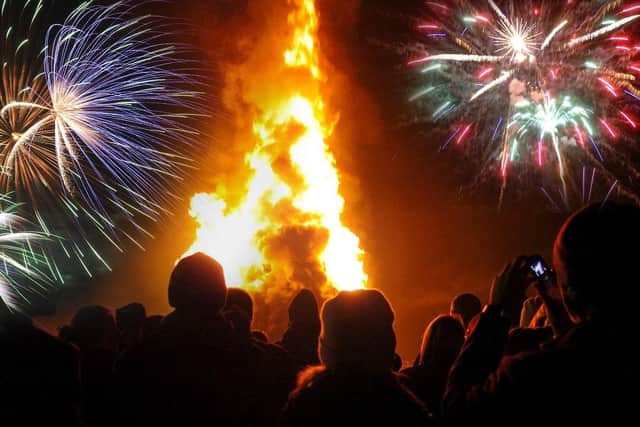Bonfire Night 2022: When is Bonfire Night, what is the story behind the holiday and what was Guy Fawkes' connection with Yorkshire?
There is only one month to go before Bonfire Night.
Here is everything you need to know about Bonfire Night, also known as Guy Fawkes Night.
When is Bonfire Night 2022?


Do you remember the rhyme that’s intended to remind you of the date of Bonfire Night?
Advertisement
Hide AdAdvertisement
Hide Ad‘Remember, remember the fifth of November’ - well there you go.
This year Bonfire Night will take place on a Saturday on November 5.
The date remains constant but the day changes every year. If the day falls on a weekday, celebrations are always held on the following weekend.
What are the origins behind Bonfire Night and where was Guy Fawkes from?
Bonfire Night means something different depending on the country you live in.
Advertisement
Hide AdAdvertisement
Hide AdFor us it is associated with the tradition of commemorating the failed actions of Guy Fawkes on November 5 1605.
Guy Fawkes was born and educated in York. He converted to Catholicism following the death of his father, when his mother married a recusant Catholic.
He later moved to mainland Europe where he fought for Catholic Spain in the Eighty Years’ War against Protestant Dutch reformers in the Low Countries.
He then travelled to Spain to get support for a Catholic rebellion in England, but was unsuccessful.
Advertisement
Hide AdAdvertisement
Hide AdThrough Thomas Wintour, with whom he returned to England, and Robert Catesby, who planned to assassinate King James I and restore a Catholic monarch to the throne, they leased an undercroft under the House of Lords; Fawkes was in charge of the gunpowder that they planted there and the authorities were called by an anonymous letter to search Westminster Palace during the early hours of November 5.
They found Fawkes guarding the explosives and he was questioned and tortured over the next few days, when he eventually confessed to wanting to blow up the House of Lords.
Before his execution on January 31, Fawkes fell from a scaffold where he broke his neck and therefore ended up not having to endure the agony of being hanged, drawn and quartered.
He since became synonymous with the Gunpowder Plot and the failure of the plotters’ actions has been commemorated in the UK as Guy Fawkes Night, when a sculpture of him is burned on a bonfire as part of Bonfire Night traditions followed by firework displays.
Comment Guidelines
National World encourages reader discussion on our stories. User feedback, insights and back-and-forth exchanges add a rich layer of context to reporting. Please review our Community Guidelines before commenting.
